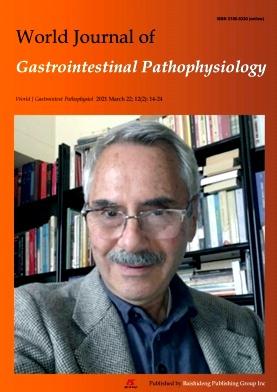Differential expression of pancreatic protein and chemosensing receptor mRNAs in NKCC1-null intestine.
引用次数: 2
Abstract
AIM To investigate the intestinal functions of the NKCC1 Na(+)-K(+)-2Cl cotransporter (SLC12a2 gene), differential mRNA expression changes in NKCC1-null intestine were analyzed. METHODS Microarray analysis of mRNA from intestines of adult wild-type mice and gene-targeted NKCC1-null mice (n = 6 of each genotype) was performed to identify patterns of differential gene expression changes. Differential expression patterns were further examined by Gene Ontology analysis using the online Gorilla program, and expression changes of selected genes were verified using northern blot analysis and quantitative real time-polymerase chain reaction. Histological staining and immunofluorescence were performed to identify cell types in which upregulated pancreatic digestive enzymes were expressed. RESULTS Genes typically associated with pancreatic function were upregulated. These included lipase, amylase, elastase, and serine proteases indicative of pancreatic exocrine function, as well as insulin and regenerating islet genes, representative of endocrine function. Northern blot analysis and immunohistochemistry showed that differential expression of exocrine pancreas mRNAs was specific to the duodenum and localized to a subset of goblet cells. In addition, a major pattern of changes involving differential expression of olfactory receptors that function in chemical sensing, as well as other chemosensing G-protein coupled receptors, was observed. These changes in chemosensory receptor expression may be related to the failure of intestinal function and dependency on parenteral nutrition observed in humans with SLC12a2 mutations. CONCLUSION The results suggest that loss of NKCC1 affects not only secretion, but also goblet cell function and chemosensing of intestinal contents via G-protein coupled chemosensory receptors.nkcc1缺失肠中胰腺蛋白和化学感应受体mrna的差异表达。
目的:为了研究NKCC1 Na(+)-K(+)-2Cl共转运体(SLC12a2基因)的肠道功能,分析NKCC1缺失肠中mRNA的差异表达变化。方法对野生型成年小鼠和nkcc1基因缺失小鼠(每种基因型各6只)肠道mRNA进行芯片分析,确定差异基因表达变化模式。采用在线Gorilla程序对差异表达模式进行基因本体分析,并采用northern blot分析和定量实时聚合酶链反应验证所选基因的表达变化。采用组织学染色和免疫荧光法鉴定胰腺消化酶表达上调的细胞类型。结果与胰腺功能相关的基因表达上调。这些基因包括脂肪酶、淀粉酶、弹性酶和丝氨酸蛋白酶,表明胰腺外分泌功能,以及胰岛素和再生胰岛基因,代表内分泌功能。Northern blot分析和免疫组织化学表明,胰腺外分泌mrna的差异表达是十二指肠特异性的,并且局限于杯状细胞的一个子集。此外,研究人员还观察到一种主要的变化模式,涉及化学传感功能的嗅觉受体以及其他化学传感g蛋白偶联受体的差异表达。这些化学感觉受体表达的变化可能与SLC12a2突变患者肠道功能衰竭和肠外营养依赖有关。结论NKCC1缺失不仅影响分泌,还影响杯状细胞功能和通过g蛋白偶联的化学感觉受体对肠道内容物的化学感觉。
本文章由计算机程序翻译,如有差异,请以英文原文为准。
求助全文
约1分钟内获得全文
求助全文

 求助内容:
求助内容: 应助结果提醒方式:
应助结果提醒方式:


